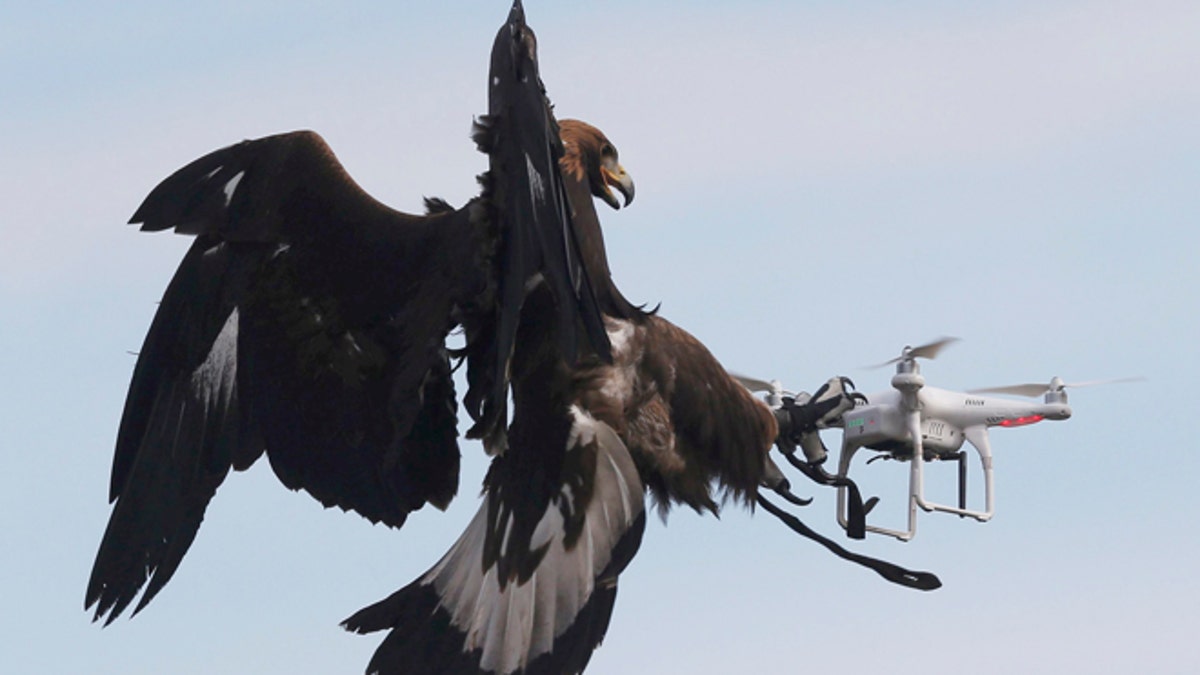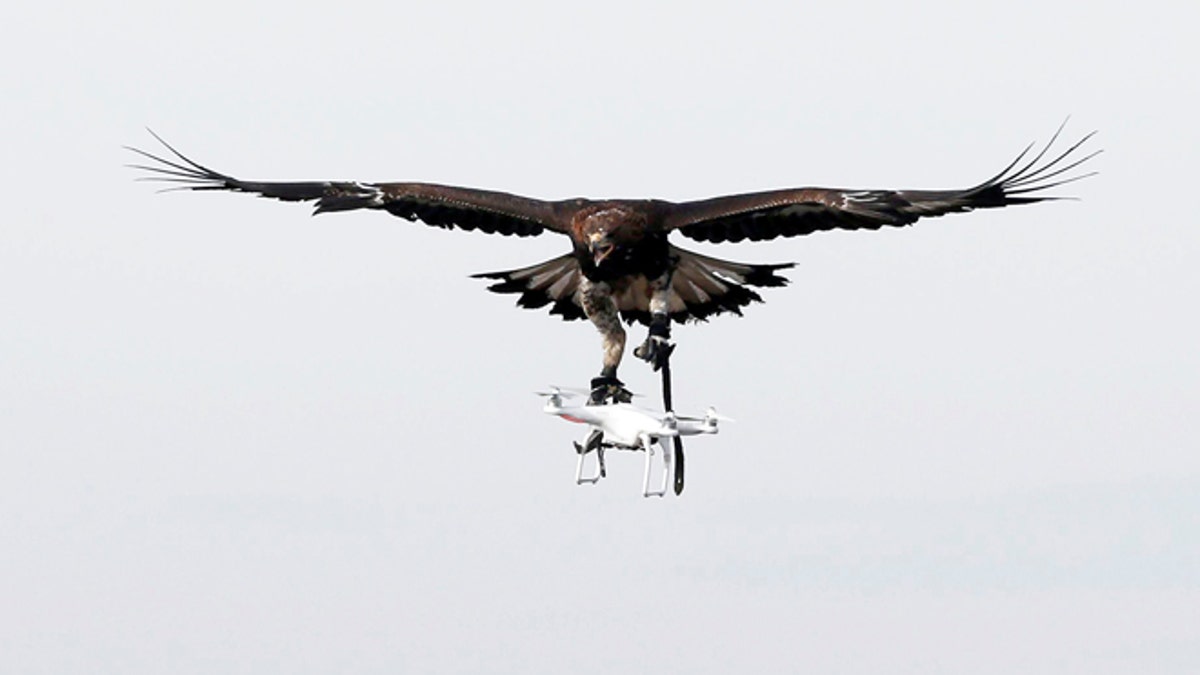
A golden eagle grabs a flying drone during a military training exercise at Mont-de-Marsan French Air Force base, Southwestern France, February 10, 2017. REUTERS/Regis Duvignau - RTX30HM1
The French military is literally going where eagles dare in an effort to combat the increasing use of drones by criminals and terrorists.
Following incidents of drones flying over the presidential palace and restricted military sites – along with the deadly 2015 Paris terror attacks – the French air force has trained four golden eagles to intercept and destroy the rogue aircraft.
Aptly named d'Artagnan, Athos, Porthos and Aramis – an homage to Alexandre Dumas’ “The Three Musketeers” – the four birds of prey have been honing their attack skills at the Mont-de-Marsan in southwestern France since mid-2016.

A French army falconer works with a golden eagle as part of a military training for combat against drones in Mont-de-Marsan French Air Force base, Southwestern France, February 10, 2017. REUTERS/Regis Duvignau - RTX30HNZ
It takes about eight months to fully train the birds, but the eagles are surrounded by drones from before they hatch to make the unmanned flying devices part of their natural environment and to teach the birds to associate drones with being fed.
“A drone means food for these birds,” Gerald Machoukow, the military base's falconer, told FRANCE 24. “Now they automatically go after them.”
The use of hunting birds – normally falcons and northern goshawks – by militaries around the globe is common practice in the fight to scare other critters away from runways and so cut the risk of accidents during takeoff or landing. But it wasn’t until 2015 when the Dutch started using bald eagles to intercept drones that other militaries started to see the benefit of these winged warriors.
The French bred the four golden eagles – three males and one female -- using artificial insemination since eagles are a protected species and harvesting wild eggs is strictly forbidden. They chose the golden eagle because of the birds hooked beak and sharp eyesight.
Also weighing in around 11 pounds, the birds are in a similar weight class as the drones they’re sent to destroy and clocking in at a top air speed of 50 miles per hour, with the capability of spotting its target from over a mile away, the eagles are deft hunters.
To protect the eagles from drone blades and any explosive device that might be attached the them, the French military designed mittens of leather and Kevlar, an anti-blast material, to protect the bird’s talons.

A golden eagle carries a flying drone away during a military training exercise at Mont-de-Marsan French Air Force base, Southwestern France, February 10, 2017. REUTERS/Regis Duvignau - RTX30HNX
"I love these birds," Machoukow told Agence France-Presse. "I don't want to send them to their death."
The birds are first taught to attack in a straight line before graduating to diving from heights. Soon they’ll be patrolling the skies over the Pyrenees Mountains in southern France and could possibly be deployed at airports and special events, such as political summits and soccer tournaments.
While an initial progress report on the eagles’ capabilities is due in June, French officials say that the results are promising and the French air force already expects four more eagles to join the fleet at Mont-de-Marsan by the summer.




















